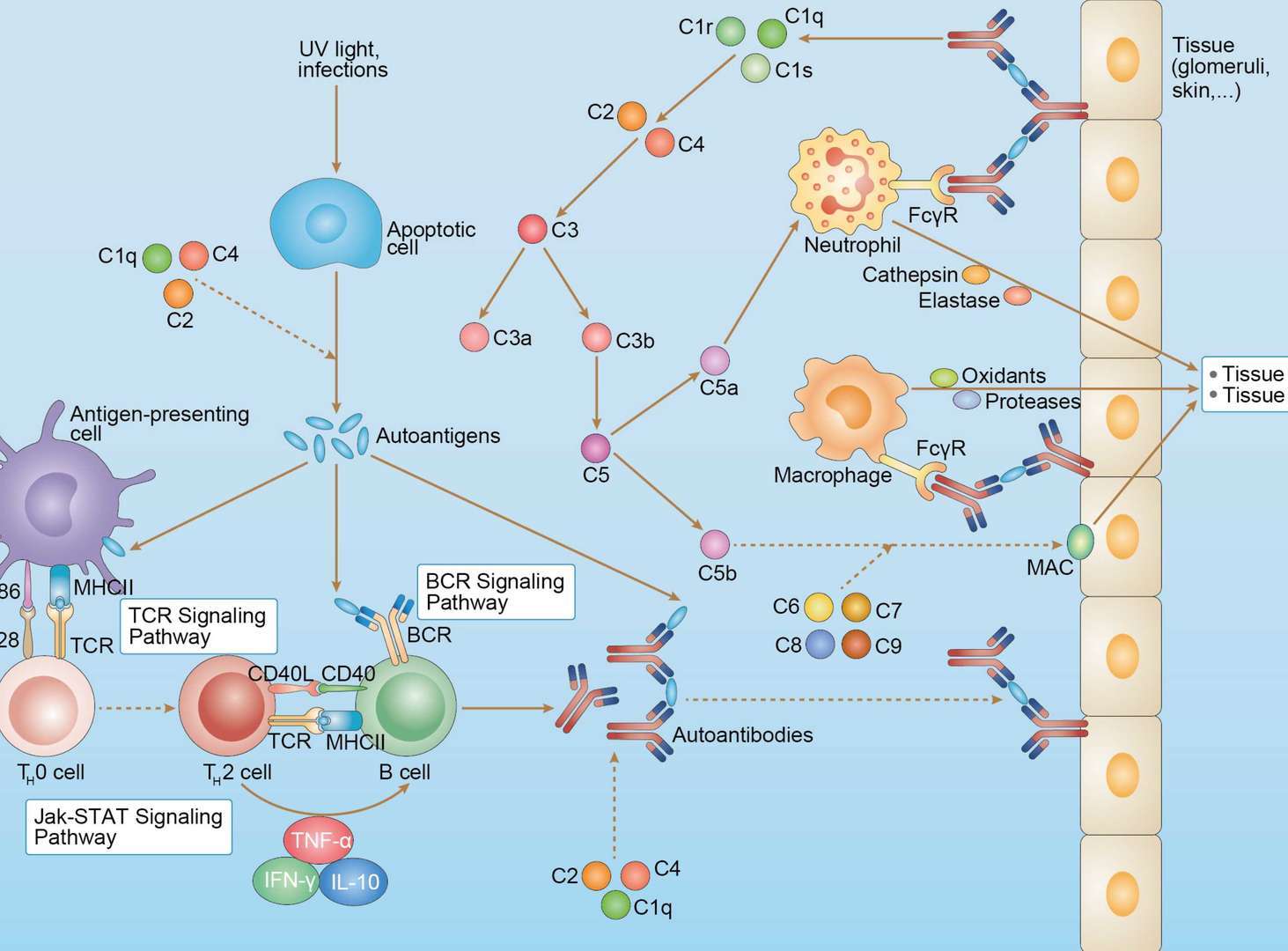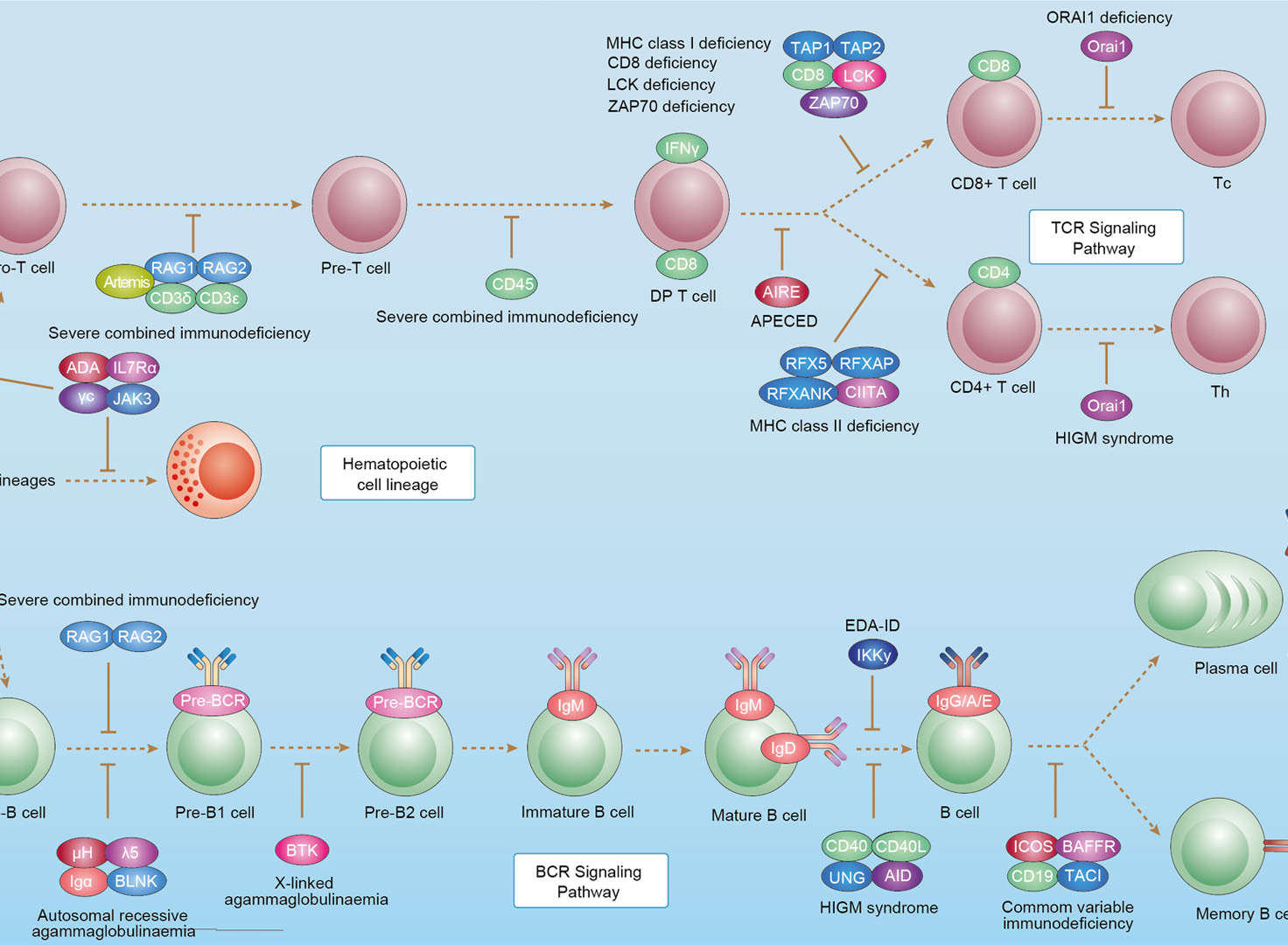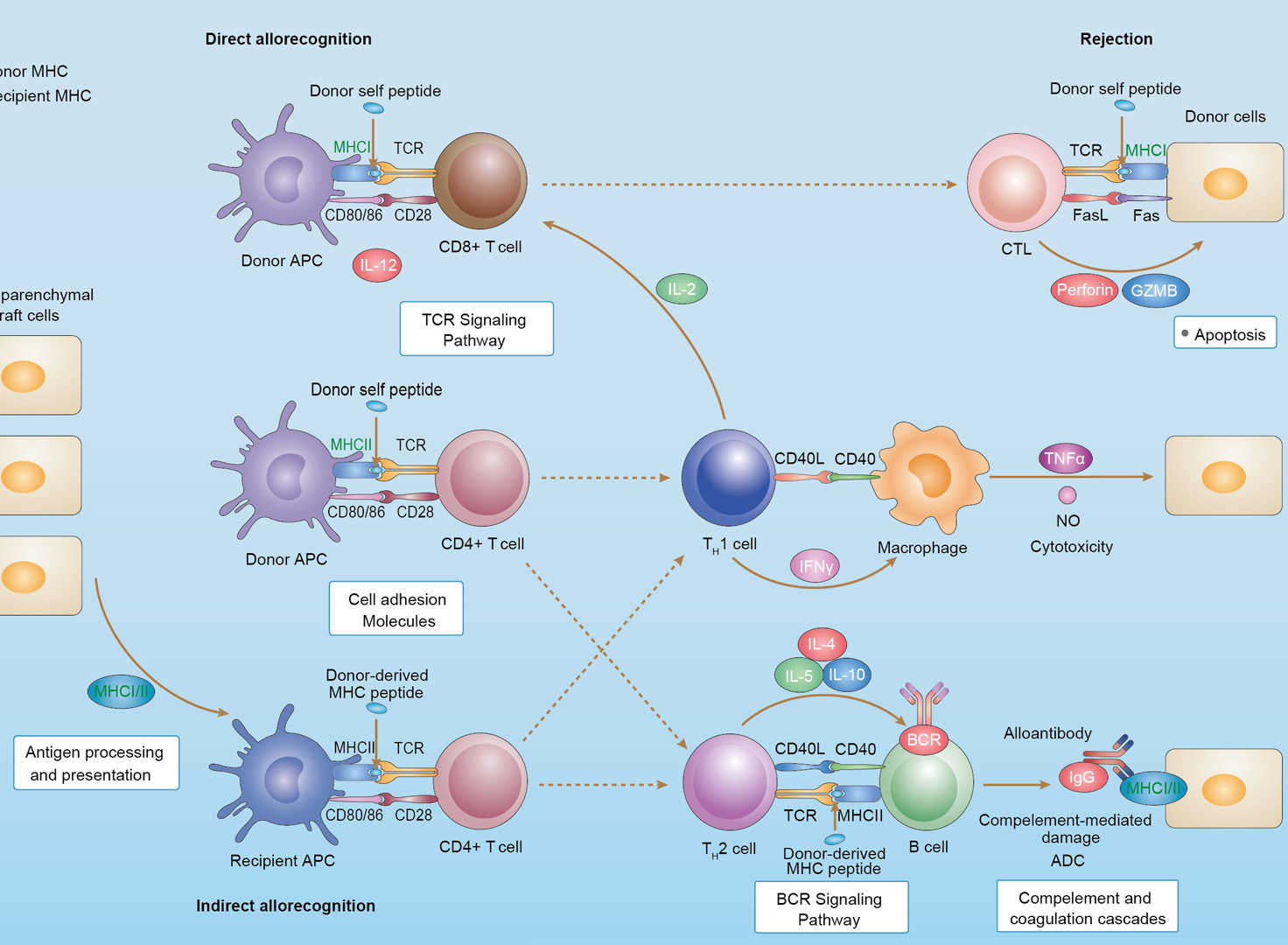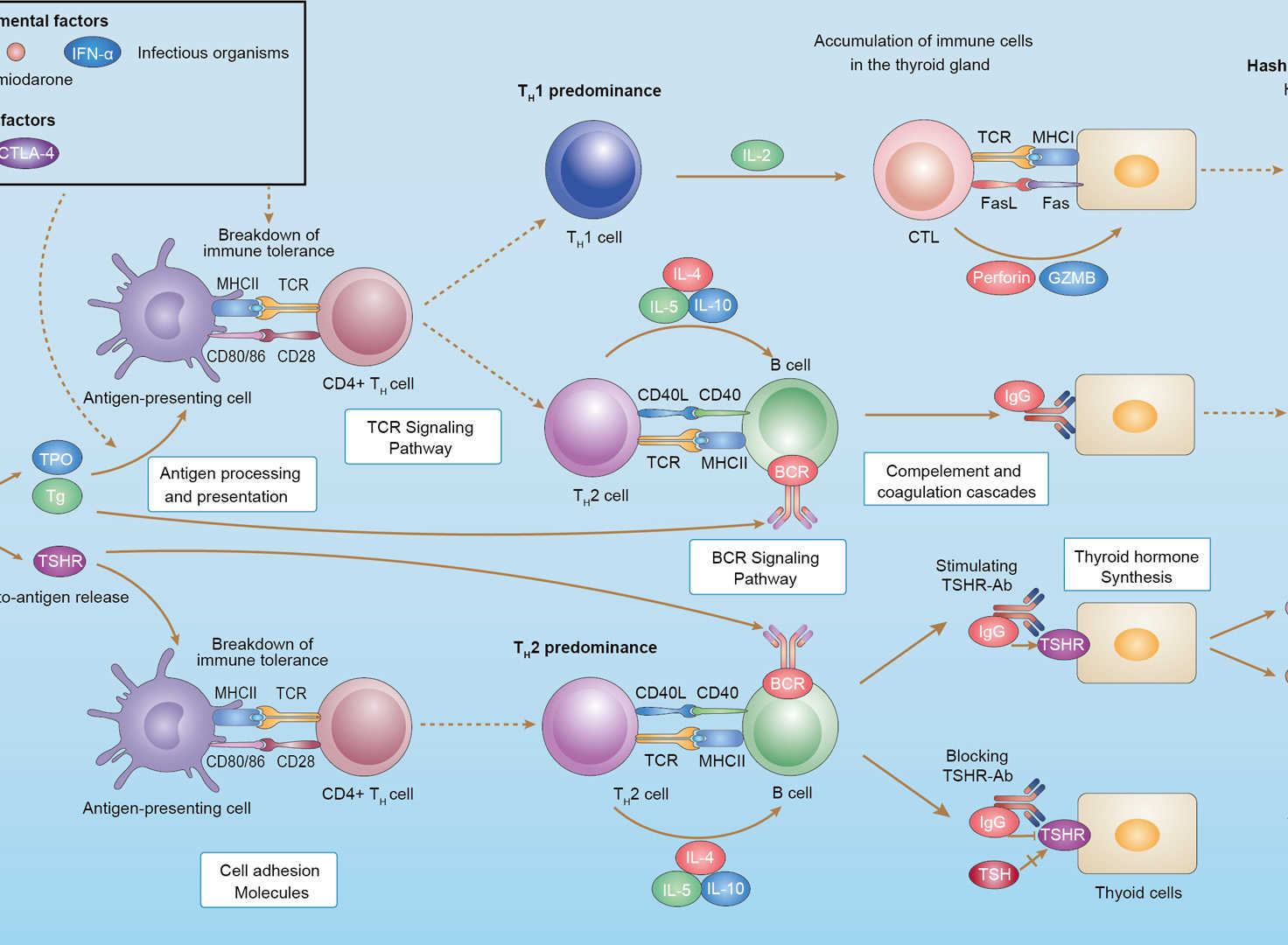Anti-Human CD40 Recombinant Antibody (TAB-152)
CAT#: TAB-152
Recombinant monoclonal antibody to CD40. It is a humanized monoclonal antibody being developed for the treatment of CD40-positive cancers like non-Hodgkin's lymphoma and hematological malignancies.






Specifications
- Immunogen
- Recombinant protein of extracellular domain of CD40
- Host Species
- Mouse
- Derivation
- Humanized (from mouse)
- Type
- IgG1
- Specificity
- Tested positive against native human antigen.
- Species Reactivity
- Human
- Applications
- IF, IP, Neut, FuncS, ELISA, FC, ICC, Agonist, Cyt, WB
- MW
- 145.1 kDa
- Related Disease
- Multiple myeloma (MM)
Product Property
- Purity
- >95.0% as determined by Analysis by RP-HPLC & analysis by SDS-PAGE.
- Storage
- Store at +4°C short term (1-2 weeks). Aliquot and store at -20°C long term. Avoid repeated freeze/thaw cycles.
Applications
- Application Notes
- The CD40 antibody has been reported in applications of IF, IP, Neut, FuncS, ELISA, FC, ICC, Agonist, Cyt, WB.
Target
Customer Review
There are currently no Customer reviews or questions for TAB-152. Click the button above to contact us or submit your feedback about this product.
Cite This Product
To accurately reference this product in your publication, please use the following citation information:
(Creative Biolabs Cat# TAB-152, RRID: AB_3111838)
Submit Your Publication
Published with our product? Submit your paper and receive a 10% discount on your next order! Share your research to earn exclusive rewards.
Biosimilar Overview
Please refer to Dacetuzumab Overview to learn more about the mechanism of action, clinical projects, and approved drugs of Dacetuzumab.
Related Diseases
Downloadable Resources
Download resources about recombinant antibody development and antibody engineering to boost your research.
Product Notes
This is a product of Creative Biolabs' Hi-Affi™ recombinant antibody portfolio, which has several benefits including:
• Increased sensitivity
• Confirmed specificity
• High repeatability
• Excellent batch-to-batch consistency
• Sustainable supply
• Animal-free production
See more details about Hi-Affi™ recombinant antibody benefits.
Datasheet
MSDS
COA
Certificate of Analysis LookupTo download a Certificate of Analysis, please enter a lot number in the search box below. Note: Certificate of Analysis not available for kit components.
Protocol & Troubleshooting
We have outlined the assay protocols, covering reagents, solutions, procedures, and troubleshooting tips for common issues in order to better assist clients in conducting experiments with our products. View the full list of Protocol & Troubleshooting.
See other products for "CD40"
Select a product category from the dropdown menu below to view related products.
| CAT | Product Name | Application | Type |
|---|---|---|---|
| AGTO-G079E | Anti-CD40 immunotoxin (scFv)-PE | Cytotoxicity assay, Function study |
| CAT | Product Name | Application | Type |
|---|---|---|---|
| TAB-0061CL | Anti-Human CD40 Recombinant Antibody (PPAT-071-01) | ELISA, ADCC, CDC, FuncS | |
| TAB-0062CL | Anti-Human CD40 Recombinant Antibody (PPAT-071-02) | ELISA, ADCC, CDC, FuncS | |
| TAB-0063CL | Anti-Human CD40 Recombinant Antibody (PPAT-071-03) | ELISA, ADCC, CDC, FuncS | |
| TAB-0064CL | Anti-Human CD40 Recombinant Antibody (PPAT-071-04) | ELISA, ADCC, CDC, FuncS | |
| TAB-0065CL | Anti-Human CD40 Recombinant Antibody (PPAT-071-05) | ELISA, ADCC, CDC, FuncS |
| CAT | Product Name | Application | Type |
|---|---|---|---|
| TAB-188LC | Anti-Human CD40 Recombinant Antibody (chi220) | SPR, ELISA, Inhib, FuncS | Chimeric antibody (mouse/human) |
| TAB-188LC-F(E) | Anti-Human CD40 Recombinant Antibody Fab Fragment (chi220) | SPR, ELISA | Chimeric antibody (mouse/human) |
| TAB-192LC-F(E) | Human Anti-CD40 Recombinant Antibody; Fab Fragment (TAB-192LC-F(E)) | ELISA | Chimeric (mouse/human) Fab |
| TAB-193LC-F(E) | Human Anti-CD40 Recombinant Antibody; Fab Fragment (TAB-193LC-F(E)) | ELISA | Chimeric (mouse/human) Fab |
| TAB-202LC-F(E) | Anti-CD40 Recombinant Antibody; Fab Fragment (TAB-202LC-F(E)) | FC, ELISA | Chimeric antibody (mouse/rhesus) |
| CAT | Product Name | Application | Type |
|---|---|---|---|
| TAB-189LC | Anti-Human CD40 Recombinant Antibody (F4) | SPR, ELISA | Humanized antibody |
| TAB-190LC | Anti-Human CD40 Recombinant Antibody (L3.17) | SPR, ELISA | Humanized antibody |
| TAB-194LC | Human Anti-CD40 Recombinant Antibody (TAB-194LC) | ELISA | Humanized IgG1, κ |
| TAB-200LC | Human Anti-CD40 Recombinant Antibody (TAB-200LC) | ELISA | Human IgG1, κ |
| TAB-189LC-F(E) | Anti-Human CD40 Recombinant Antibody Fab Fragment (F4) | SPR, ELISA | Humanized antibody |
| CAT | Product Name | Application | Type |
|---|---|---|---|
| TAB-195LC | Human Anti-CD40 Recombinant Antibody (TAB-195LC) | ELISA, Agonist | Human IgG2 |
| TAB-196LC | Human Anti-CD40 Recombinant Antibody (TAB-196LC) | ELISA, Agonist | Human IgG2 |
| TAB-197LC | Human Anti-CD40 Recombinant Antibody (TAB-197LC) | ELISA, Agonist | Human IgG2 |
| TAB-198LC | Human Anti-CD40 Recombinant Antibody (TAB-198LC) | ELISA | Human IgG2 |
| TAB-195LC-F(E) | Human Anti-CD40 Recombinant Antibody; Fab Fragment (TAB-195LC-F(E)) | ELISA | Human Fab |
| CAT | Product Name | Application | Type |
|---|---|---|---|
| NEUT-362CQ | Human Anti-CD40 Recombinant Antibody (clone 5D12) | Block, ELISA, FC, SPR, IP, IHC | Human IgG4, κ |
| NEUT-363CQ | Mouse Anti-CD40 Recombinant Antibody (clone 5C3) | FC, Block, Activ | Mouse IgG1, κ |
| NEUT-366CQ | Rat Anti-CD40 Recombinant Antibody (clone MAB0819) | Block, Activ | Rat IgG2 |
| CAT | Product Name | Application | Type |
|---|---|---|---|
| NEUT-364CQ | Mouse Anti-CD40 Recombinant Antibody (clone CBL829) | WB, Neut | Mouse IgG2b, κ |
| NEUT-367CQ | Mouse Anti-CD40 Recombinant Antibody (clone CBL013) | WB, IHC, Neut | Mouse IgG2 |
| CAT | Product Name | Application | Type |
|---|---|---|---|
| NEUT-365CQ | Hamster Anti-CD40 Recombinant Antibody (clone HM40-3) | FC, Block, Costim, IHC | Hamster IgM |
| CAT | Product Name | Application | Type |
|---|---|---|---|
| MOR-4059 | Hi-Affi™ Rabbit Anti-CD40 Recombinant Antibody (clone SI126DS) | ELISA | Rabbit IgG |
| CAT | Product Name | Application | Type |
|---|---|---|---|
| MOB-105LC | Human Anti-CD40 Recombinant Antibody (MOB-105LC) | FC, FuncS | Human IgG1, κ |
| MOB-106LC | Human Anti-CD40 Recombinant Antibody (MOB-106LC) | FC, FuncS, ELISA | Human IgG2, κ |
| MOB-107LC | Human Anti-CD40 Recombinant Antibody (MOB-107LC) | FC, FuncS, ELISA | Human IgG2, κ |
| VS-0724-XY18 | Mouse Anti-CD40 Agonistic Antibody (VS-0724-XY18) | FC, Agonistic assays, CyTOF®, ICC | Mouse IgG2b |
| VS-0724-XY19 | Rat Anti-Cd40 Agonistic Antibody (VS-0724-XY19) | FC, IP, Agonistic assays, CyTOF® | Rat IgG2a |
| CAT | Product Name | Application | Type |
|---|---|---|---|
| HPAB-0162-YC-S(P) | Human Anti-CD40 Recombinant Antibody; scFv Fragment (HPAB-0162-YC-S(P)) | FC | Human scFv |
| HPAB-0163-YC-S(P) | Human Anti-CD40 Recombinant Antibody; scFv Fragment (HPAB-0163-YC-S(P)) | FC | Human scFv |
| HPAB-0164-YC-S(P) | Human Anti-CD40 Recombinant Antibody; scFv Fragment (HPAB-0164-YC-S(P)) | FC, Agonist | Human scFv |
| HPAB-0165-YC-S(P) | Human Anti-CD40 Recombinant Antibody; scFv Fragment (HPAB-0165-YC-S(P)) | FC | Human scFv |
| HPAB-0166-YC-S(P) | Human Anti-CD40 Recombinant Antibody (clone S2C6); scFv Fragment | FC, FuncS | Human scFv |
| CAT | Product Name | Application | Type |
|---|---|---|---|
| NS-021CN | Human Anti-CD40 Recombinant Antibody (NS-021CN) | ELISA, IF, Block, FuncS | Human IgG |
| NS-021CN-F(E) | Human Anti-CD40 Recombinant Antibody; Fab Fragment (NS-021CN-F(E)) | ELISA | Human Fab |
| NS-021CN-S(P) | Human Anti-CD40 Recombinant Antibody; scFv Fragment (NS-021CN-S(P)) | ELISA | Human scFv |
| CAT | Product Name | Application | Type |
|---|---|---|---|
| PFBC-514 | Human Anti-CD40 Recombinant Antibody Fab Fragment (PFBC-514) | ELISA, FC, WB, Agonist | Human Fab |
| HPAB-0710-FY-S(P) | Mouse Anti-CD40 Recombinant Antibody (clone AB009); Fab Fragment | ELISA | Mouse Fab |
| HPAB-0743-FY-S(P) | Human Anti-CD40 Recombinant Antibody; scFv Fragment (HPAB-0743-FY-S(P)) | ELISA | Human scFv |
| HPAB-0744-FY-S(P) | Human Anti-CD40 Recombinant Antibody; scFv Fragment (HPAB-0744-FY-S(P)) | ELISA | Human scFv |
| HPAB-0745-FY-S(P) | Human Anti-CD40 Recombinant Antibody; scFv Fragment (HPAB-0745-FY-S(P)) | ELISA | Human scFv |
| CAT | Product Name | Application | Type |
|---|---|---|---|
| AFC-TAB-152 | Afuco™ Anti-CD40 ADCC Recombinant Antibody, ADCC Enhanced (AFC-TAB-152) | IF, IP, Neut, FuncS, ELISA, FC | ADCC enhanced antibody |
| AFC-TAB-262 | Afuco™ Anti-CD40 ADCC Recombinant Antibody, ADCC Enhanced (AFC-TAB-262) | IP, IF, FuncS, FC, Neut, ELISA | ADCC enhanced antibody |
| AFC-TAB-759 | Afuco™ Anti-CD40 ADCC Recombinant Antibody, ADCC Enhanced (AFC-TAB-759) | ELISA, FC, IP, FuncS, IF, Neut | ADCC enhanced antibody |
| AFC-TAB-470CQ | Afuco™ Anti-CD40 ADCC Recombinant Antibody, ADCC Enhanced (AFC-TAB-470CQ) | ELISA, IHC, FC, IP, IF, FuncS | ADCC enhanced antibody |
| AFC-TAB-006ML | Afuco™ Anti-CD40 ADCC Recombinant Antibody, ADCC Enhanced (AFC-TAB-006ML) | ELISA, IHC, FC, IP, IF, Inhib | ADCC enhanced antibody |
| CAT | Product Name | Application | Type |
|---|---|---|---|
| HPAB-1218WJ | Recombinant Llama Anti-CD40 Single Domain Antibody (HPAB-1218WJ) | ELISA | Llama VHH |
| HPAB-1219WJ | Recombinant Llama Anti-CD40 Single Domain Antibody (HPAB-1219WJ) | ELISA | Llama VHH |
| HPAB-1220WJ | Recombinant Llama Anti-CD40 Single Domain Antibody (HPAB-1220WJ) | ELISA | Llama VHH |
| CAT | Product Name | Application | Type |
|---|---|---|---|
| HPAB-1297WJ | Human Anti-CD40 Recombinant Antibody (HPAB-1297WJ) | ELISA, FC | Humanized IgG, κ |
| HPAB-1298WJ | Human Anti-CD40 Recombinant Antibody (HPAB-1298WJ) | ELISA, FC | Humanized IgG, κ |
| HPAB-1299WJ | Human Anti-CD40 Recombinant Antibody (HPAB-1299WJ) | ELISA, FC | Humanized IgG, κ |
| FAMAB-1769CQ | Mouse Anti-CD40 Recombinant Antibody (clone 3/23) | IP, FC, IHC | Mouse IgG2a |
| VS3-CJ825 | Mouse Anti-CD40 Recombinant Antibody (clone 3A8) | IF, FC | Mouse IgG2b |
| CAT | Product Name | Application | Type |
|---|---|---|---|
| VS-0724-YC1328 | AbPlus™ Anti-CD40 Magnetic Beads (VS-0724-YC1328) | IP, Protein Purification |
| CAT | Product Name | Application | Type |
|---|---|---|---|
| VS-0924-YC117 | Mouse Anti-CD40 Recombinant Antibody Hexamer (VS-0924-YC117), CDC Enhanced | ELISA, ADCC, CDC | Antibody hexamer |
| VS-0924-YC118 | Human Anti-CD40 Recombinant Antibody Hexamer (VS-0924-YC118), CDC Enhanced | ELISA, Block, FC, IF, Activ, CDC | Antibody hexamer |
| CAT | Product Name | Application | Type |
|---|---|---|---|
| VS-0225-XY52 | CytoStream™ Armenian Hamster Anti-CD40 Recombinant Antibody (clone HM40-3) | FC, Block | Armenian Hamster IgM, kappa |
| CAT | Product Name | Application | Type |
|---|---|---|---|
| VS-0325-FY89 | Rat Anti-CD40 (clone FGK45) scFv-Fc Chimera | FC, WB, Agonist | Rat IgG1, scFv-Fc |
| CAT | Product Name | Application | Type |
|---|---|---|---|
| VS-0425-YC514 | Recombinant Anti-CD40 Vesicular Antibody, EV Displayed (VS-0425-YC514) | ELISA, FC, Neut, Cell-uptake |
| CAT | Product Name | Application | Type |
|---|---|---|---|
| VS-0525-XY1181 | Anti-CD40 Immunohistochemistry Kit | IHC |
| CAT | Product Name | Application | Type |
|---|---|---|---|
| VS-0525-YC30 | Recombinant Anti-CD40 (CRD1 x ECD) Biparatopic Antibody, Tandem scFv | ELISA, FC, Neut, IHC, IP, IF | Tandem scFv |
| VS-0525-YC206 | Recombinant Anti-CD40 (CRD2 x CRD1) Biparatopic Antibody, Tandem scFv | ELISA, FC, IF, IHC, IP | Tandem scFv |
| VS-0525-YC208 | Recombinant Anti-CD40 Biparatopic Antibody, Tandem scFv (Bleselumab x Selicrelumab) | ELISA, FC, IP, IF, IHC | Tandem scFv |
| CAT | Product Name | Application | Type |
|---|---|---|---|
| VS-0825-YC57 | SmartAb™ Recombinant Anti-CD40 pH-dependent Antibody (VS-0825-YC57) | ELISA, ICC, IP, IF, FC, Neut | Human IgG1 |
Popular Products

Application: IF, IP, Neut, FuncS, ELISA, FC, ICC

Application: ELISA, FC, IP, FuncS, IF, Neut, ICC

Application: FC, IP, ELISA, Neut, FuncS, IF, WB

Application: Neut, ELISA, IF, IP, FuncS, FC, IHC

Application: IP, IF, FuncS, FC, Neut, ELISA, ICC

Application: IF, IP, Neut, FuncS, ELISA, FC, WB

Application: ELISA, FC, IP, FuncS, IF, Neut, ICC

Application: SPR, Inhib, FuncS

Application: FC, IA, IF, IP, IHC, FuncS
For research use only. Not intended for any clinical use. No products from Creative Biolabs may be resold, modified for resale or used to manufacture commercial products without prior written approval from Creative Biolabs.
This site is protected by reCAPTCHA and the Google Privacy Policy and Terms of Service apply.









 Asthma
Asthma
 Systemic Lupus Erythematosus
Systemic Lupus Erythematosus
 Primary Immunodeficiency
Primary Immunodeficiency
 Allograft Rejection
Allograft Rejection
 Autoimmune Thyroid Disease
Autoimmune Thyroid Disease











-3-1.png)



